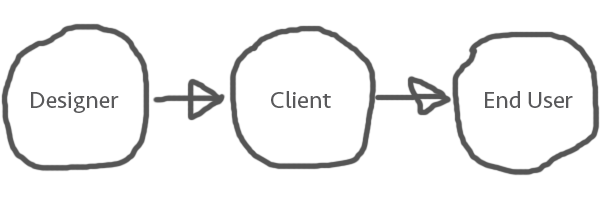A Better End-Client Experience
I’m here to stand up for the users. You know, the people that we, as designers and developers, have always sworn are the most important people to consider in our work. The ones who actually use the things we build and who we made them for.
I’m talking about our clients. That’s right. The people who we work for are—at the very least—equally important to the success of the sites we build as the people who are actually visiting the them.
I find that the conversation is totally one-sided, often to the tune of the end user on the front end of the site. I sit in plenty of meetings and have read my fair share of blogs that decry the need for a better end-user experience. The end-user, they argue, is paramount and transcends to all other opinions. We’re reminded to design for the end-user while remembering that we may not in fact be the end-user. That’s all a very real and true argument so long as we the discussion is on the front end.
Those who manage sites are their own kind of end-user. Sure, they may not be the ones who ultimately use the sites we build on the front end. Sure, they may not be the end-user we had in mind when designing that incredibly beautiful landing page. However, they are responsible for taking our work and maintaining it long after we leave. They are the ones managing content, updating graphics, and basically maintaining the integrity of what it is we build and hand off.

I can’t even estimate the number of times I’ve handed off a site only to come back a few months later to find some mangled resemblance of what I had created. I’ve even gone so far as to pull some of those sites out of my portfolio because I didn’t want the poor maintenance to represent me or the work I know I am capable of producing. Sad, but true.
The bottom line is this: we have to consider the needs of our clients in addition to the end-user. Whether you are a freelancer hired to work or you are part of an in-house team, the people who manage the site after us are going to need an experience on the back end that is both as easy and enjoyable as the front end of the site. A good user experience on the front end will facilitate a better user experience on the back end as well.
Call it a better a end-client experience. Call it whatever you want. The fact is that a better overall user experience includes the client at some point. They, too, are users of the sites we build&mbashjust another side of it that happens to influence the one we seem spend all our time talking about.